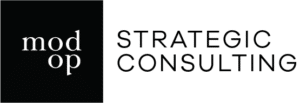Marketers love to tout the “premium” aspects of wares they promote. McDonald’s sells premium salads, Alamo rents premium vehicles and Hanes offers premium socks. But do all these goods really live up to our expectations of premium?
Mirriam-Webster
defines premium as “a value in excess of that normally or usually expected.” But what makes the value of a salad or mass-marketed socks “in excess of” what is usually expected?
Apple’s iPhone is nearly a decade old. When it was introduced, it was out of reach for most Americans. Its price, and limited carrier availability (AT&T only), combined with its superior capability compared to the market leader at the time, Blackberry, made it a premium product. Its value exceeded the norm—it offered high quality hardware, innovative design, and unparalleled functionality. But fast-forward to 2017, and the iPhone is the norm. Does it exceed our expectations anymore? Is it still premium?
Air travel used to be a premium form of transportation. In the 1950s through the 1970s travelers dressed up for the occasion, flight crews were glamorous, and the in-flight dining experience involved plates, silverware and real food. Today air travel is a tolerable experience—on good days. And don’t mention the bad days.
So how
do
you figure out what a premium experience really is? Here’s a hint, inspired by a
Jalopnic article
published in April.
The head of design at automaker Bugatti, Achim Anscheidt, has an enviable job conceptualizing some of the most exotic production vehicles in the world. The very mandate of these vehicles is to exceed the norm of what a sports car can be. And by all accounts, Mr. Anscheidt’s vehicles do exactly that.
So, what is the ultimate personal ride for the architect of a Bugatti supercar? A classic Porsche 911, plain gray in color and ordinary in appearance in every way. Except it’s not. A two-year restoration project tore this vehicle down and then the body was meticulously re-sculpted by hand out of racing-grade kevlar. The interior is fitted exactly to Mr. Anscheidt’s frame and the engine is tuned to mechanical perfection. This is Mr. Anscheidt’s premium automotive experience. And yet, in appearance, it’s no different than any other Porsche 911 of that vintage.
Relative and Subjective
The concept of premium is both relative and subjective. Relativity is what most product designers get right. Market assessment, competitive analysis and financial modeling are all necessary tools to identify market gaps and to highlight product opportunities. All are prudent and necessary steps.
But comprehending subjectivity is different. It starts with a deep and intimate understanding of your customer. What makes Mr. Anscheidt’s billion-dollar buyers select the Bugatti Chiron over competitive offerings from Ferrari or Lamborghini? Why did Mr. Anscheidt invest heavily in that classic Porsche when he could have driven his own product?
The answer is found not by simply solving for a known customer problem or filling a need, but by igniting your customers’ passion. To excel at product development, it’s imperative that you understand your customers’ hopes, dreams and desires. You must learn what motivates them, what excites them and what they live for. This is the inspiration for a premium product. This is what leads to innovation that delivers that “value in excess of what is expected.” This is what led to the original iPhone magic, what set TWA stewardesses apart in the golden era of flight and what
your
customers yearn for.
This isn’t, however, a one-time process. Yesterday’s breakthrough is today’s baseline. Delivering a premium experience is an iterative process of evolving (and sometimes reinventing) your products. It’s perpetually driven by that intimate understanding of your customers, which can enable you to repeatedly deliver a value in excess of their expectations. This is what will set your products apart.
















